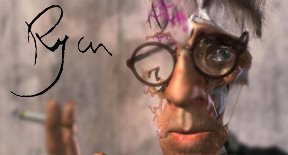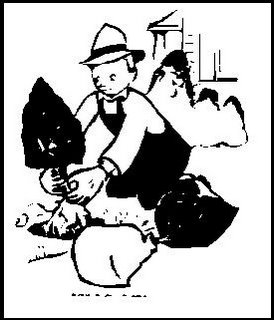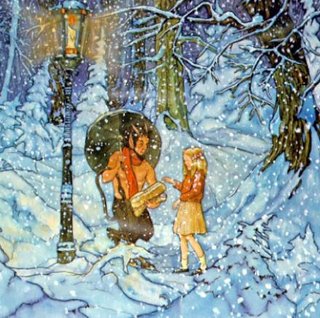 There are those who might consider the film Ryan to be depressing. Personally, I would use words more like intriguing and fascinating. Very evidently portrayed are the concepts of emotional and mental anguish and self-destruction. This is done both on the level of the events occurring as well as in a visually powerful way through the deformation of the characters themselves on screen. The contrast between his former whole self and his current deformed self was astounding. To be able to look at an individual whom most would simply pass by or look down on due to a ruined state and instead see what that person once was, to give respect to that person, to tell their tragic story...one could only be so blessed to see people with such eyes. The final shot of Ryan panhandling with the reflection of his former self gave him such respect, which left me feeling very impressed.
There are those who might consider the film Ryan to be depressing. Personally, I would use words more like intriguing and fascinating. Very evidently portrayed are the concepts of emotional and mental anguish and self-destruction. This is done both on the level of the events occurring as well as in a visually powerful way through the deformation of the characters themselves on screen. The contrast between his former whole self and his current deformed self was astounding. To be able to look at an individual whom most would simply pass by or look down on due to a ruined state and instead see what that person once was, to give respect to that person, to tell their tragic story...one could only be so blessed to see people with such eyes. The final shot of Ryan panhandling with the reflection of his former self gave him such respect, which left me feeling very impressed.It seems that diving deeply into a character and exploring their pain and self-destruction through writing or visual arts is very powerful and meaningful to me. I have gone through my share of brokenness and have come to realize that there is a point when complete brokenness can turn into either a personal spiritual awakening or the beginnings of a downward spiral of self-destruction. Either way, when our identity is ripped away and our failures surround us, something major is going to happen. Exploring this process and the results of it are so powerful to me Only after spending some time in the deepest pit with a character do I fully appreciate their coming into the light, and only after spending time in pained isolation do I fully recognize the complete tragedy of a person becoming deformed never to be restored. I will keep room for both of these outcomes in my stories, and I will strive to give respect to those where little is given. Perhaps when we find ourselves in a pit, in darkness, we should not be so quick to simply scramble out, but instead feel what we feel, let it change us, and take the time to realize why we are there.
On another note, it is refreshing for me to finally see CG used in a way that has no resemblence whatsover to cutsy cartoony little characters. This film dove deeply into a character without censor or apology and used the CG tools to portray the character's situation and pain in a powerful visual way with a unique and creative style. If it is possible for one artist to achieve this, then perhaps there is hope for me yet.



